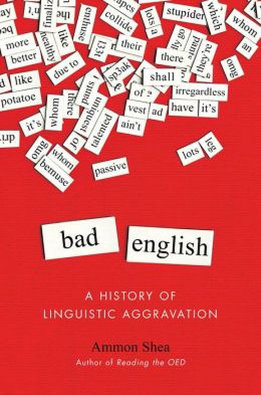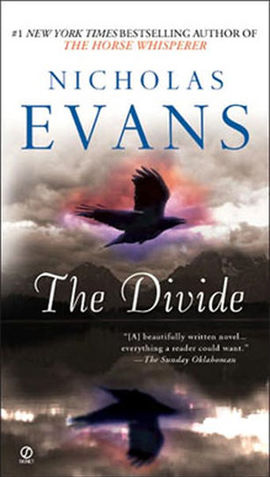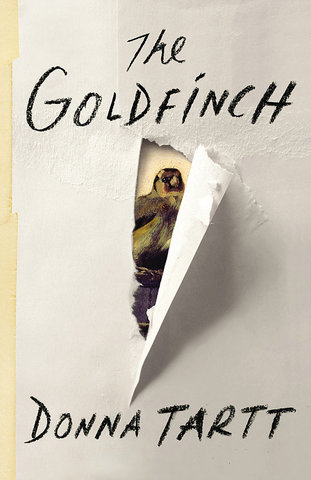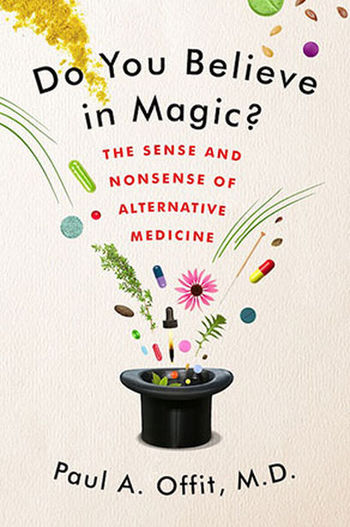 Written by Lauryn Smith Hopefully my review of Ammon Shea’s “Bad English” leaves no stone unturned, literally bemusing you because it ain’t boring irregardless of your interest in linguistics. Did anyone cringe at my depraved use of the English language in that opening sentence? Good. I intended that, and Shea was my inspiration. In his nonfiction book “Bad English,” Shea delineates the language's history, illustrating the worries, objections and complaints of grammarians throughout the ages. In doing so, he intentionally commits linguistic crimes and provides examples of historic and contemporary linguistic "mistakes," ultimately concluding that English is a hot mess but in the best way possible. Shea subtly yet successfully argues against those who take a prescriptive approach to English. He demonstrates that it is not necessary to fight over language. Instead, he shows that language is alive, that it is an interesting subject for study, debate and conversation. According to Shea, there is no right or wrong way to use English as every rule has evidence of being broken. Within the text, Shea presents both sides of the story, citing supporters and detractors of various of English’s canons. To clarify his points, he picks individual words and grammatical tendencies and follows their histories, explaining arguments and counterarguments surrounding their usage. He covers some expected terms, such as “hopefully,” “literally” and “irregardless,” but also less common ones, such as “very,” “donate” and “belittle.”
1 Comment
 Written by Lauryn Smith “The Divide” by Nicholas Evans is one of those books you can pick up and get lost in, best read on a cloudy day with a cup of hot tea and a sky-high pile of blankets. OK, that sounds a little ostentatious. Let me explain. “The Divide” is a mellow, meandering read. In it, Evans evokes a rustic, hospitable lifestyle, effortlessly inviting readers to experience Montana’s mountains, ranches and genial residents. After reading the book, it is easy to want to run off to a cozy cabin in the woods, take the trails on horseback and then porch it with that steaming cup of tea I mentioned. The fictional story concerns the Coopers, a New York family that spends two weeks each summer on a remote ranch in Montana. On one such trip, the father, Ben, meets an artist from Santa Fe named Eve, for whom he leaves his wife and two teenagers. Around the time Ben walks out on his family, his daughter, Abbie, moves to Montana for college. While still vulnerable from the breaking of her family, Abbie gets involved with a group of radical conservationists, an involvement that ultimately leads to her being wanted for murder and acts of ecoterrorism.  Written by Lauryn Smith I have been eager to get my hands on Donna Tartt’s third novel, “The Goldfinch,” for quite some time, and recently something fantastic happened. Reviewer Beth Winters surprised me with a copy on my birthday! I breezed through the book, and Miss Tartt, I would be honored to shake your hand. You might be familiar with Tartt’s second novel, “The Secret History.” That book was published in 1992. “The Goldfinch” was published in 2013. Tartt clearly takes her time, but it is well worth the wait. “The Goldfinch” is more than a story. It is a work of art. The novel depicts the fictional life and times of Theodore (Theo) Decker. One day when Theo is 13 years old, he and his mother visit a New York art museum. There Theo's mother dies in an unfathomable explosion. During the scramble of events following the outburst, Theo encounters a dying man who ultimately has a profound effect on his life. The key element: a painting by Carel Fibritius called The Goldfinch, a painting the man implores Theo to take out of the crumbling museum. Tartt transforms what could have easily been a common tale involving broken families, child services, addiction and wealth disparities into a tantalizing story that also involves stolen art, the act of coming of age and philosophical musings.  Written by Lauryn Smith Do you believe in magic? Not the magic in a young girl’s heart, but the magic that is alternative medicine. (Sorry, had to.) I never used to oppose the magic of natural remedies, but then I read Paul A. Offit’s accessible and engaging nonfiction book “Do You Believe in Magic?”. Now I am much more leery. Alternative medicine, which includes things like megavitamins, acupuncture and homeopathy, is not all it is cracked up to be, so says Offit in his well-researched, objectively written book on the matter. In fact, Offit presents insurmountable science-based evidence that many forms of alternative medicine do more harm than good. The events Offit chooses to portray in the book illustrate why alternative medicine has become widely accepted as a desirable alternative to mainstream medicine. To many, it is definite, spiritual, meaningful and empowering, and it stems from ancient wisdom... right? Offit explains that there is no evidence that alternative medicine does what it claims to do, that is, heal. I repeat, no evidence. Zip. Nada. Goose egg. (No, personal testimonials do not count as evidence.) In fact, Offit shows that the few studies out there—blame the scarcity on politics—often support the exact opposite. The evidence is not limited to a single arena. Chiropractic manipulations can result in torn arteries. Supplements can cause psychosis, heart arrhythmias, brain swelling and other problems. Megavitamins can increase the risk of cancer. |

Enjoying my book reviews? If you’ve found them helpful or simply love diving into a good book, consider supporting my caffeine-fueled reading sessions! Your contribution helps keep the reviews coming and ensures I stay wide awake for those late-night reading marathons. Cheers to a shared love for literature! ☕️
Categories
All
|
